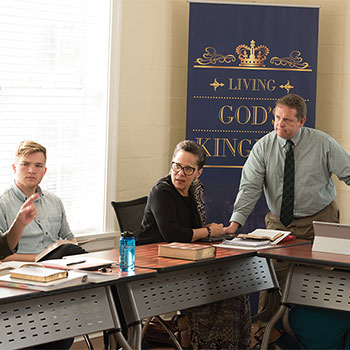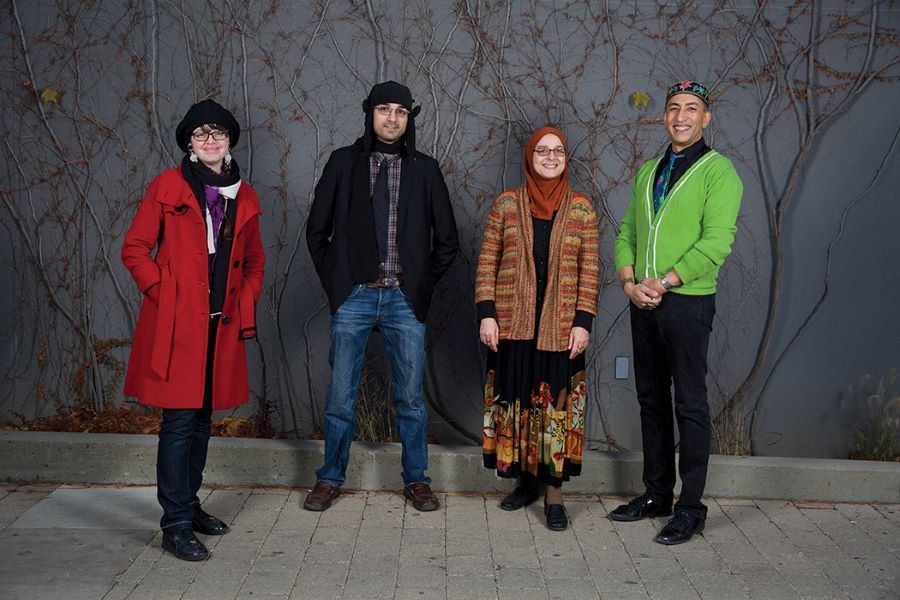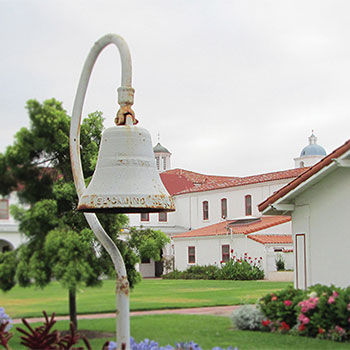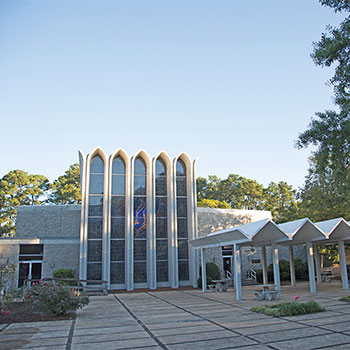 |
| David J. Lose and Michael L. Cooper-White
Credit: Merri Brown |
When the presiding bishop of the Evangelical Lutheran Church in America (ELCA) called last spring to learn more about our plans to carve a new future in Pennsylvania-based Lutheran theological education, she quipped that if Gettysburg and Philadelphia could join forces, the second coming of Jesus would probably be close behind!
With a combined history of nearly 350 years since the Lutheran Theological Seminary at Gettysburg was founded in 1826 and the Lutheran Theological Seminary at Philadelphia was established four decades later, the schools have often been characterized as “friendly rivals.” Even in the 19th century the two schools were separated by a deep theological rift in American Lutheranism. Truth be told, even in more recent decades, there were eras when the relationship was not so friendly.
One of us (Michael Cooper-White) has been the president at Gettysburg since 2000. The other (David Lose) has been president at Philadelphia since 2014. As we came to know and appreciate each other, we quickly discovered that we share common convictions and visions for the future of theological education and leadership formation.
We are both convinced that God is calling us to do a new thing and that radical changes in the church and society call for transformative change in the ways leaders are prepared. Caught in the same tsunami of shifting enrollment patterns that permeate other North American seminaries, we are convinced that neither school is on a long-term sustainable trajectory by itself, and that we can become more efficient and effective by joining together organically in a new venture. And we are convinced that solid foundations have been built over the past two decades, a mostly friendly era in which our chief rivalry was played out in the annual student-run Luther Bowl football contest on the Gettysburg campus.
Late last fall, through email, telephone, and in-person conversations, we developed what David posed as a thought experiment: What if, rather than a more gradual evolutionary process of increased cooperation, we instead proposed to our boards a bold recommendation to consider full institutional union?
Further conversation with the board chairs, deans, and other leaders of both schools resulted in a common vision shared with each board in January. With unanimous votes, the two boards commissioned a broad exploratory process, authorized the formation of eight work groups, and allocated resources to engage legal counsel, work with accreditors, and conduct all aspects of due diligence. They asked that the groups report back to the boards three months later.
At their April meetings, both boards again acted by unanimous votes to continue in the process. Strong encouragement came early from the bishops of our supporting judicatories (the East Coast synods of the ELCA), and in their spring assemblies many of these synods expressed support and even adopted formal resolutions offering encouragement.
At the heart of this new venture, which will be called United Lutheran Seminary, is a commitment to address the emerging crisis of clergy shortage in our parent denomination. There are currently 600 pulpit vacancies in the ELCA, with more than a thousand anticipated by 2020. We will make seminary education more accessible by offering a shared program on two campuses and hosting a new distributed-learning M.Div. via online and residential intensive courses. Greater affordability will come through a “students first” approach to scholarships, where all full-time ELCA residential students will receive full-tuition scholarships and all other students will be eligible for aid that matches the support of their own denomination up to 100 percent.
Conversations with Pennsylvania’s Department of Education have helped shape a path forward. Gettysburg Seminary, with its longer history, will be the continuing corporate entity for the purposes of licensing and accreditation. Philadelphia Seminary will transfer its assets and then cease to exist as a corporate entity. However, both campuses will remain open under the new structure.
Gettysburg will change its name to United Lutheran Seminary, adopt new by-laws, create a new board, and call a new president; neither of us will be a candidate. This path will ensure continuity for current students while allowing us to craft a new identity together, forge innovative approaches in education and formation, and fashion new curricular approaches based on the competencies that churches are saying leaders need.
While still midstream in the process, we’ve learned some things that may be of use to other schools contemplating similar consolidations or joint futures.
-
Vision and values take the lead. The prospect of a typical “merger” between two challenged institutions would not excite or inspire many. Accordingly, we have offered a vision of a new venture that makes a clear and compelling promise to form leaders who are responsive to a changing culture in a way that is sustainable for our denomination and affordable for students. Similarly, we have realized that we needed to articulate key values, including strong support for our current students, faculties, and staffs during this season of disruption.
-
The design of the process merits careful planning. After articulating the “why” in our vision and values statements, we realized that the “how” was the next key step. Michael’s experience at a workshop on mergers and consolidations helped guide our appointment of the eight initial work groups that conducted exhaustive due diligence explorations at warp speed between January and April. We were also able to tap the resources of our boards, including gaining the counsel of board members with consulting experience and legal expertise.
-
Shared governance roles must be clear. While both our faculties had been enlisted by the boards in earlier conversations about increased cooperation, some colleagues have been frustrated that the boards made preliminary decisions without a more prolonged period of deliberation and greater faculty involvement. In a time when institutional sustainability is at stake, the board must rise to its mandate of ensuring the future mission. By the same token, curricular design and educational outcomes and processes remain within the primary purview of the pedagogical professionals. The work group conducting this process is made up of faculty members, who circulate drafts of emerging curricula to all colleagues.
-
Stewarding the symbolic is essential. Recognizing that no fewer than half a dozen attempts to unify these two schools over the previous century have failed, we have identified two critical components for success. First, when ecclesial bodies force a merger, there’s little chance for success; rather, this effort must be owned by the schools’ leaders and constituents. Second, maintaining a presence on both campuses is needed in order to provide two distinct contexts (urban vs. town-and-country), providing two points of access for students, and to bolster donor and alumni loyalty to treasured historic sites.
-
Communication is critical. The bishop who chairs our Transition Team (a 12-member group appointed by the boards to lead many aspects of the ongoing process) said on one occasion, “Sometimes it’s important to send out a memo that says simply, ‘Nothing happened this week’!” His point was that in a fast-paced process with thousands of stakeholders, it’s vital to keep all constituents informed as key decisions are made; to seek input, feedback, and critique; and to manage media relations. Transparency must, of course, be balanced with confidentiality in personnel issues and sensitive legal matters, but the more that can be shared, the better the reception is likely to be.
-
Expect “row 33” surprises: On a flight shortly after the merger of USAirways and American Airlines, Michael noticed the aircraft had no row 33. An airline employee explained that in the merger process, no one recognized that the same type of aircraft had different seating configurations between the two predecessors. So for a transitional period, the solution was to eliminate Row 33 from the former USAirways planes. We have been surprised at a few points how a word or phrase becomes controversial, or more happily how issues we anticipated being problematic are readily resolved. Just expecting the occasional “row 33” issue helps leaders remain calm if faced with too many passengers or an unoccupied row of seats!
We find ourselves midstream in a very complex and challenging process. Our pathway forward, though becoming clearer, remains somewhat uncertain. The profile of our successor president, the faculty configuration and other personnel decisions, and key property-related matters are still up in the air. We are eager to continue gleaning the collective wisdom and counsel of our colleagues throughout the world of theological education, and hope that these brief reflections on our journey might be of some benefit to others in search of a new future.




























